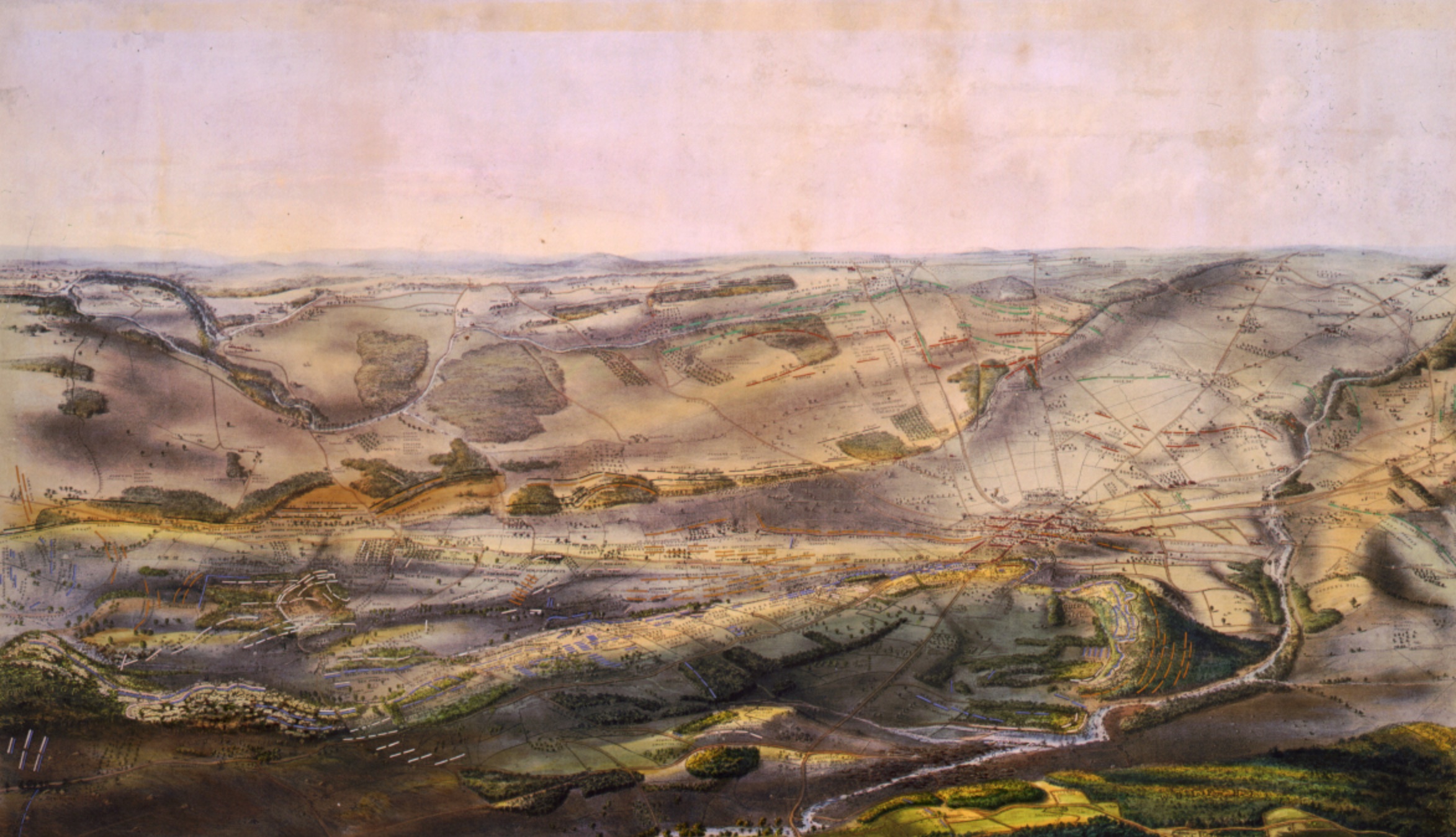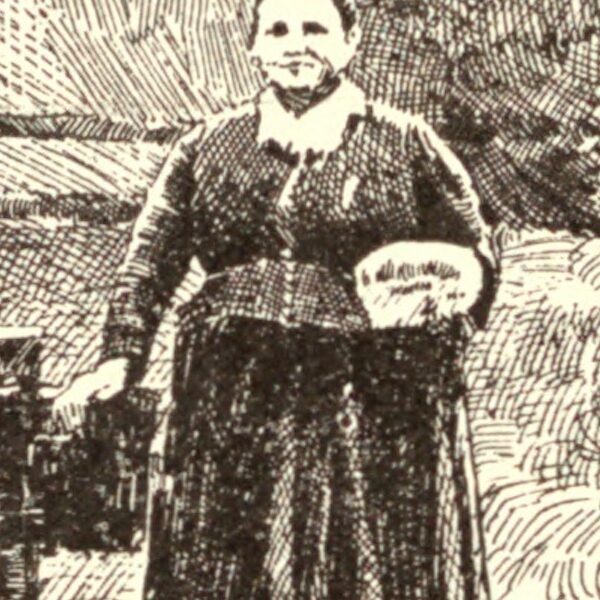Americans have long been fascinated by the Battle of Gettysburg, the epic struggle fought between the forces of generals Robert E. Lee and George G. Meade over three days in July 1863. Hardly had the fighting—in which the opposing sides suffered a total of between 46,000 and 51,000 casualties—ended before many of the country’s prominent artists began producing renditions of the battle. Some were based on eyewitness accounts, others on the imaginations of the creator. Some were produced within days of the fighting, others years afterward. To mark the 154th anniversary of the clash at Gettysburg, we’ve assembled a variety of these portrayals below. (Unless otherwise noted, all images are courtesy of the Library of Congress.)

“Gettysburg Battlefield” (1863) by John B. Bachelder shows a bird’s-eye view of the ground over which Union (depicted in blue) and Confederate (depicted in red) forces clashed in July 1863.

This postwar Alfred R. Waud drawing shows Confederate forces attacking the center of the Union line on July 3, 1863—an assault that would be known to history as Pickett’s Charge.

Among Waud’s better-known sketches of the Battle of Gettysburg is this one—his depiction of the death of Union general John Reynolds during the engagment’s first day.

This Waud sketch shows the attack of the Louisiana Tigers on a battery from the Army of the Potomac’s XI Corps on East Cemetery Hill on July 2, 1863.

On July 4, 1863, artist Edwin Forbes made this sketch of artilery horses killed during the repulse of Pickett’s Charge the previous day.

Feodor Fuchs’ dramatized depiction of the fighting at Gettysburg, published in 1863, shows the battle from the Union perspective. (Anne S.K. Brown Military Collection)

Also published in 1863 was this depction of the Confederate attack on Cemetery Hill by John Henry Bufford. (Anne S.K. Brown Military Collection)

This print by an unknown artist—titled “Battle of Gettysburg, Pa. July 2nd. and 3rd. 1863″—was published in October 1864.

This 1867 lithograph, which shows Union soldiers advancing during the fighting at Gettysburg, was “[r]espectfully dedicated to the Soldiers of the United States” by the publisher.

P.F. Rothermel’s 1872 painting of the fighting at Gettysburg—thought to be of the repulse of Pickett’s Charge—is among the better-known renditions of the epic battle.

James Walker’s “Gettysburg – Repulse of Longstreet’s Assault” (1876) offers a panoramic view of the battlefield with Union forces in the foreground.

Confederate prisoners are marched to the rear as the fighting continues behind them in Kurz & Allison’s “The Battle of Gettysburg” (1884).

Thure de Thulstrup’s “The Battle of Gettysburg” (1887) shows Union general Winfield Scott Hancock (on horseback, at left) directing his troops during Pickett’s Charge.

French artist Paul Philippoteaux, best known as the creator of the Gettysburg Cylorama, painted this Gettysburg scene in 1898.





Readers may also enjoy seeing Peter Frederick Rothermel’s two other Gettysburg paintings held by the State Museum of Pennsylvania. One is a scene at Culp’s Hill that depicts a charge by the Confederate 1st Maryland Infantry (now 2nd Maryland). It includes a dog who has become the subject of one of the battle’s best-known human interest stories involving an animal mascot. The dog, popularly known as “Grace,” appears in approximately the center of the canvas shown here:
https://explorepahistory.com/displaygallery.php?gallery_id=1-7-5&bcolor=purple&showimage=1